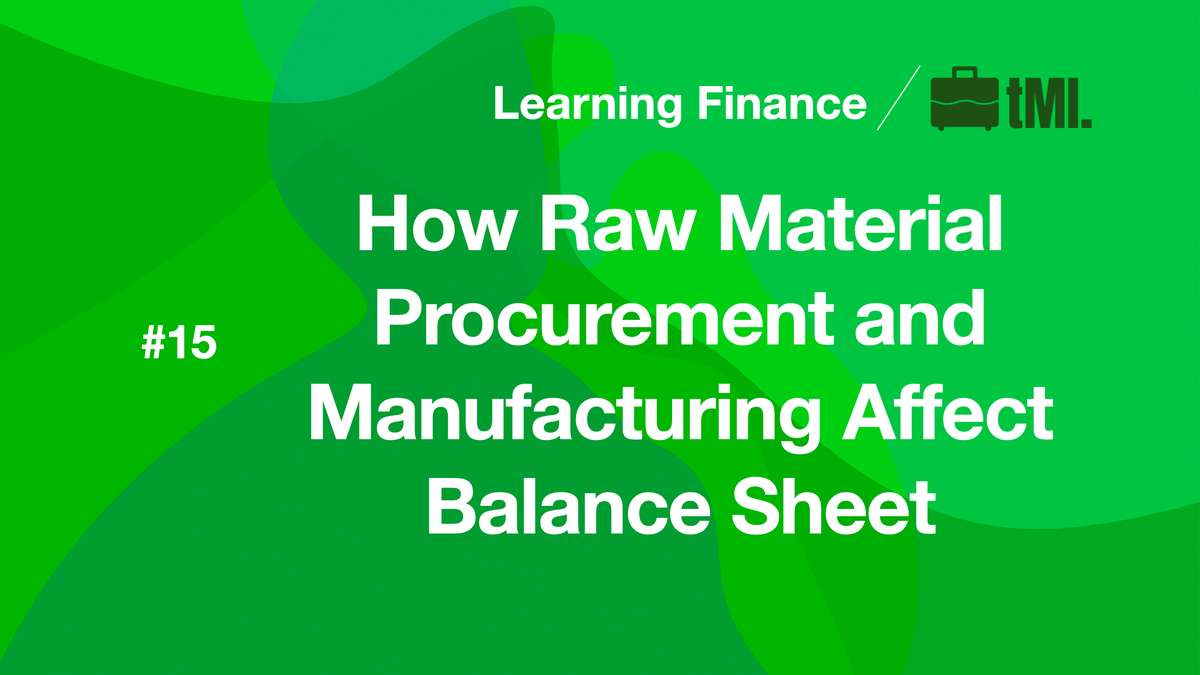How Raw Material Procurement and Manufacturing Affect Balance Sheet

If you have read my last post, you know that our fictional company has been created, and has procured land usage right and fixed assets such as manufacturing plant, equipment, etc. Now the company is ready to produce.
In this episode, we will keep following the economic activities and learn how they affect our balance sheet.
Raw Material Procurement
The first thing I want to do is to purchase raw materials. By negotiating with a supplier, I made a deal to purchase 24 million dollars of raw materials, and would need to pay 16 million dollars for the time being. The supplier agreed to give me a few months for the other 8 million dollars.
Raw materials belong to inventory, so I've accrued 24 million dollar worth of inventory under assets. I've paid out 16 million dollars of cash, so my cash position is reduced by 16 million, to 8.5 million dollars. I also owe the supplier 8 million dollars of accounts payable, which is a type of current liability.

After this economic activity we can see that our assets are increased by 8 million dollars, and our liabilities are also increased by 8 million dollars. The basic formula that assets equal liabilities plus shareholders' equity is still followed.
Manufacturing Process
The raw materials will not produce products themselves. Instead, we need people to operate our equipment to manufacture those raw materials into finished products. To make it happen, our company paid another 12 million dollars in cash for the employee wages, water and electricity costs, etc. During the manufacturing process, our inventory - 24 million worth of raw materials - is also reduced to zero, assuming that we've used up all of them. The total cost of producing our products - 36 million dollars - will be recorded as finished goods, which are a type of inventory. Thus, our inventory actually increases from 24 million to 36 million dollars.
Raw materials, products in progress, and finished goods all belong to INVENTORY.
(You may have also noticed that we actually don't have 12 million dollars of cash to spend on employee wages, water, and electrcity. Let's imagine that we've struck a deal with the power company, which grants us another six-month relief for the 4 million dollar worth of electricity bills.)
After this, we've accrued an additional 4 million dollars of accounts payable, and cash is reduced to 500,000 dollars. Our inventory, as mentioned before, increases from 24 million to 36 million dollars.

The 36 million, including 12 million labor and utility costs, and 24 million raw material costs, are the manufacturing costs for our products. Intuitively, you may think of recording costs in the Income Statement. However, it is actually recorded under Assets as inventory.
What is the deal with that?
Well, if you recall in Income Statement, the item directly underneath Revenue is cost of goods sold. When we sell our products and obtain revenue, we automatically lose ownership of the inventory. In other words, we should only record the portion of finished products SOLD here. We can spend all the money on raw materials or on manufacturing, but if none of the products are sold, they don't appear as cost of goods sold in Income Statement.

After we make a sale, our inventory actually decreases, because our finished goods decrease. We either increase our cash position or accounts receivable position, and should be able to increase our assets because of the sale.
Now if someone says that he could increase gross profit by just increasing manufacturing without increasing sales, would you believe that? We will analyze this case in the next episode.




